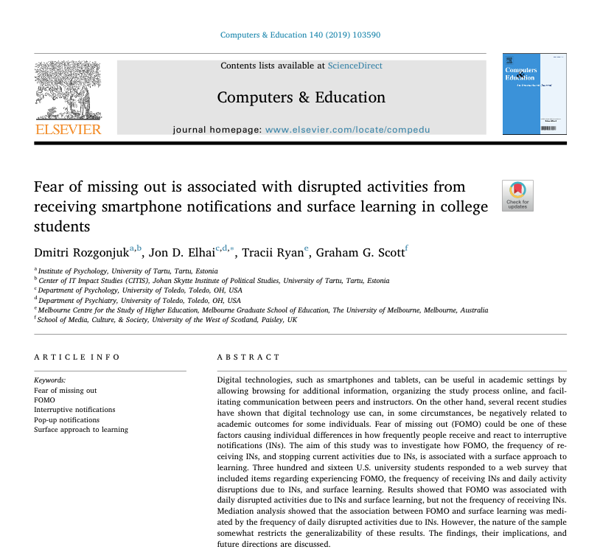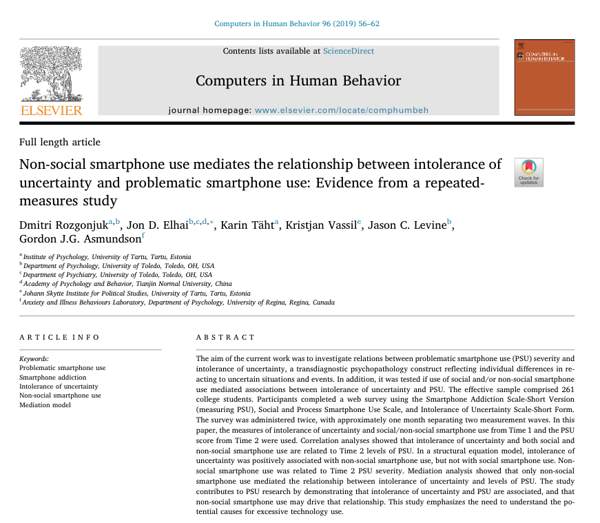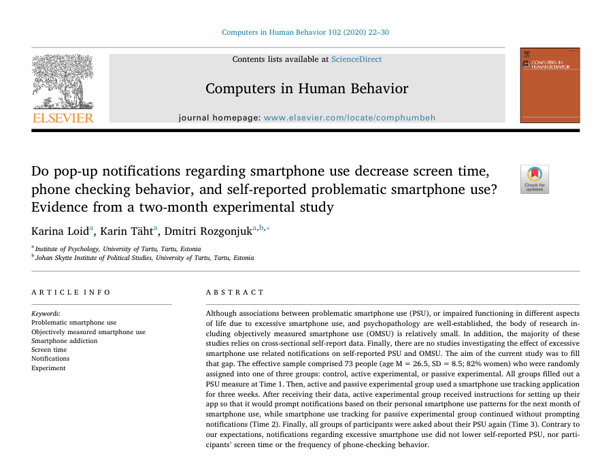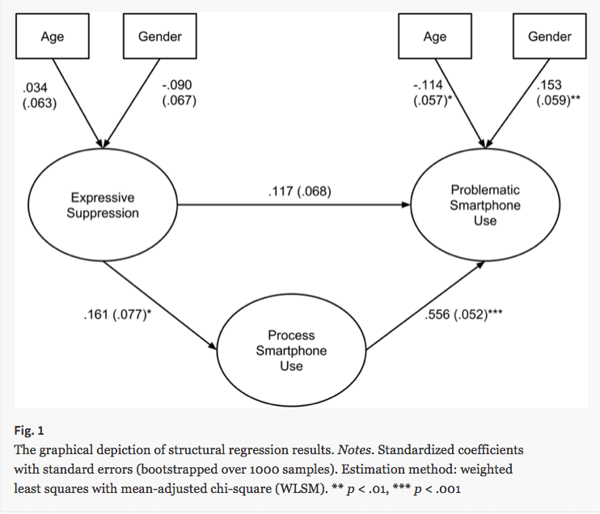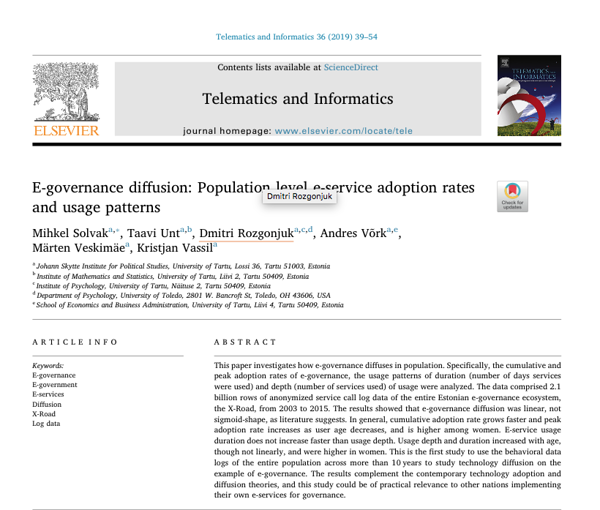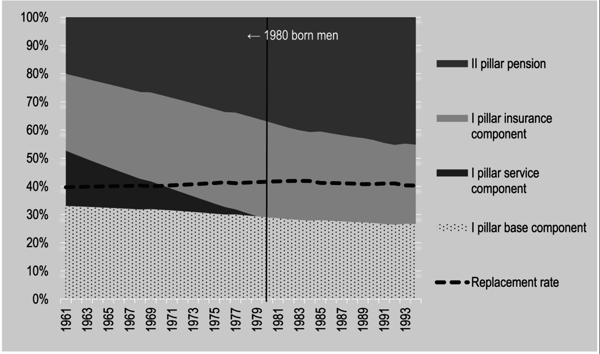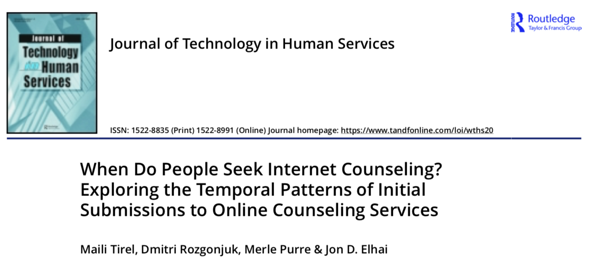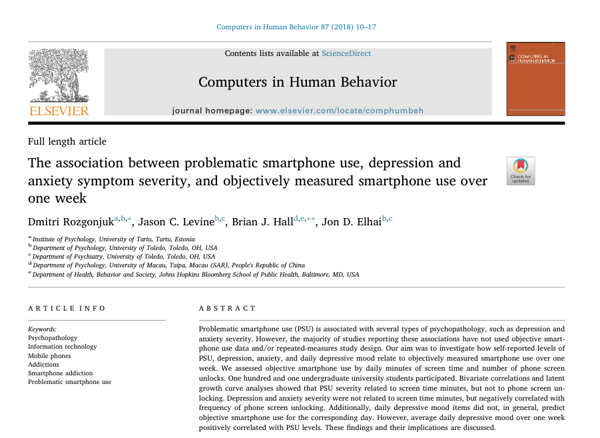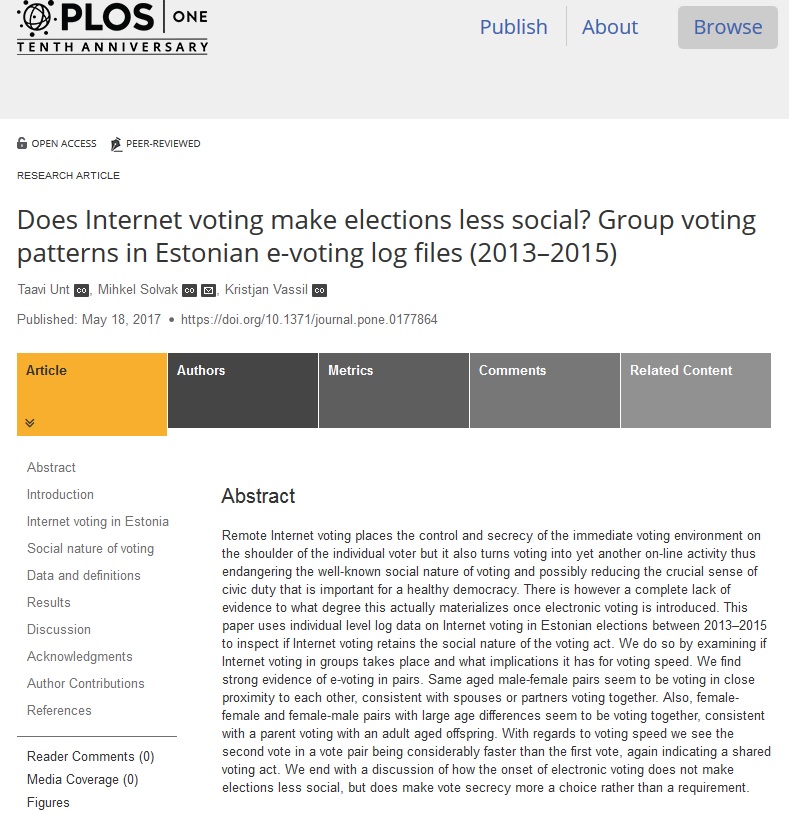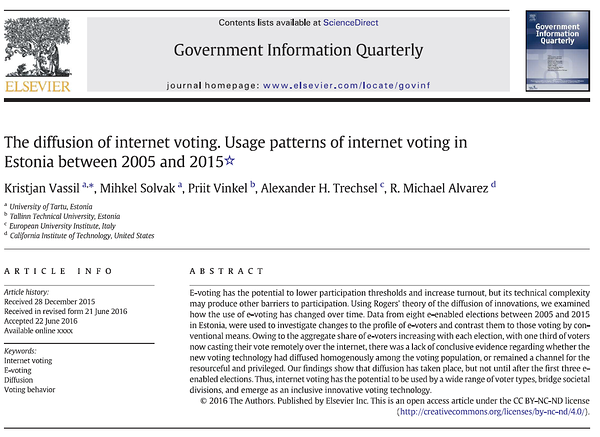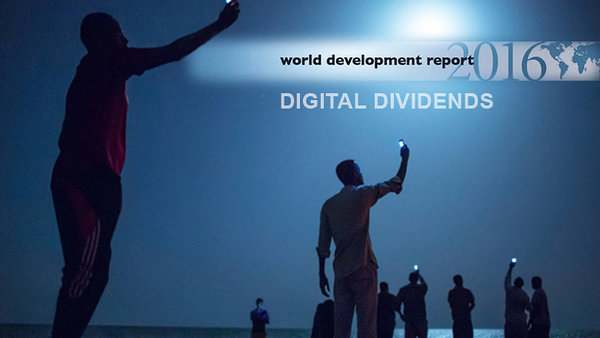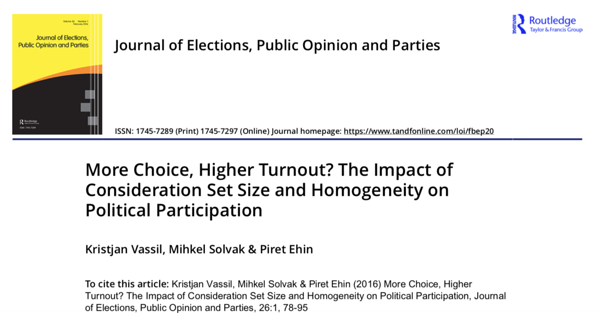Fear of missing out is associated with disrupted activities from receiving smartphone notifications and surface learning in college students
Digital technologies, such as smartphones and tablets, can be useful in academic settings by allowing browsing for additional information, organizing the study process online, and facilitating communication between peers and instructors. On the other hand, several recent studies have shown that digital technology use can, in some circumstances, be negatively related to academic outcomes for some individuals. Fear of missing out (FOMO) could be one of these factors causing individual differences in how frequently people receive and react to interruptive notifications (INs). The aim of this study was to investigate how FOMO, the frequency of receiving INs, and stopping current activities due to INs, is associated with a surface approach to learning.
Non-social smartphone use mediates the relationship between intolerance of uncertainty and problematic smartphone use: Evidence from a repeated-measures study
The aim of the current work was to investigate relations between problematic smartphone use (PSU) severity and intolerance of uncertainty, a transdiagnostic psychopathology construct reflecting individual differences in reacting to uncertain situations and events. In addition, it was tested if use of social and/or non-social smartphone use mediated associations between intolerance of uncertainty and PSU.
Do pop-up notifications regarding smartphone use decrease screen time, phone checking behavior, and self-reported problematic smartphone use? Evidence from a two-month experimental study
Although associations between problematic smartphone use (PSU), or impaired functioning in different aspects of life due to excessive smartphone use, and psychopathology are well-established, the body of research including objectively measured smartphone use (OMSU) is relatively small. In addition, the majority of these studies relies on cross-sectional self-report data. The aim of the current study was to fill that gap.
Emotion regulation in relation to smartphone use: Process smartphone use mediates the association between expressive suppression and problematic smartphone use
Previous research has shown that problematic smartphone use (PSU) is related to several affect-related psychopathology variables. Emotion dysregulation has been regarded as a central psychological factor associated with that type of psychopathology. In this paper, the association between expressive emotional suppression, a form of emotion dysregulation, with PSU was investigated. Furthermore, we tested if types of smartphone use (process and social use) mediated that association.
E-governance diffusion: Population level e-service adoption rates and usage patterns
This paper investigates how e-governance diffuses in population. Specifically, the cumulative and peak adoption rates of e-governance, the usage patterns of duration (number of days services were used) and depth (number of services used) of usage were analyzed.
The effects on intra‐generational inequality of introducing a funded pension scheme: A microsimulation analysis for Estonia
This article written by Andres Võrk and Magnus Piirits uses a single male cohort microsimulation model to analyse the intra‐generational and distributional effects of a shift in Estonia from a defined benefit pay‐as‐you‐go (PAYG) pension system to a multi‐pillared system with a PAYG scheme with contribution‐based insurance components and a funded pension scheme.
When Do People Seek Internet Counseling? Exploring the Temporal Patterns of Initial Submissions to Online Counseling Services
Internet counseling can be a valuable resource for people who cannot seek mental health care due to various reasons. The aim of this study was to analyze the time patterns of first-time contacts made by clients to online counseling services.
The association between problematic smartphone use, depression and anxiety symptom severity, and objectively measured smartphone use over one week
Problematic smartphone use (PSU) is associated with several types of psychopathology, such as depression and anxiety severity. However, the majority of studies reporting these associations have not used objective smartphone use data and/or repeated-measures study design. Our aim was to investigate how self-reported levels of PSU, depression, anxiety, and daily depressive mood relate to objectively measured smartphone use over one week.
Does Internet voting make elections less social? Group voting patterns in Estonian e-voting log files (2013–2015)
This paper, published in PLOS ONE by Taavi Unt, Mihkel Solvak and Kristjan Vassil, uses individual level log data on Internet voting in Estonian
elections between 2013–2015 to inspect if Internet voting retains the
social nature of the voting act.
Could Internet Voting Halt Declining Electoral Turnout? New Evidence That E-Voting Is Habit Forming
This article, published in Policy and Internet by Mihkel Solvak and
Kristjan
Vassil ,
examines the degree to which people who vote on the Internet once carry
on doing so, thereby testing the hypothesis that e-voting is more habit
forming than paper voting.
To what extent does Internet use affect academic performance? Using Evidence from the large-scale PISA study.
The aim of this paper is to determine how much Internet use both within and outside of school correlates with higher academic performance.
The diffusion of internet voting. Usage patterns of internet voting in Estonia between 2005 and 2015
This article, published in Government Information Quarterly by Kristjan Vassil, Mihkel Solvak, Alexander H. Trechsel and R. Michael Alvarez, analyzes the diffusion process of Estonian internet voting.
Background paper: Estonian e-Government Ecosystem: Foundation, Applications, Outcomes
World Development Report 2016 background paper by Kristjan VassilMore Choice, Higher Turnout? The Impact of Consideration Set Size and Homogeneity on Political Participation
This article examines the relationship between the properties of electoral choice sets, as perceived by the voters, and electoral participation.

